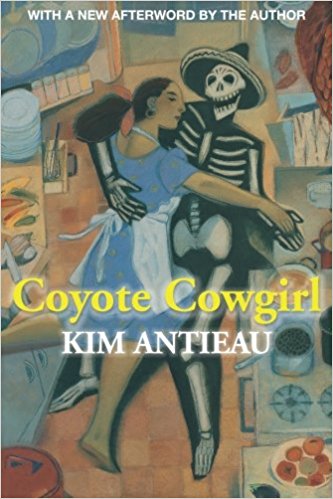 Jeanne Les Flambeaux is the black sheep of the family. Her family members are highly regarded chefs and restauranteurs — Jeanne can’t cook. Her family owns a ruby scepter and a crystal skull that they revere as luck pieces — but Jeanne can hear the skull talk. Her family loves her, but thinks she’s weird and fairly useless — Jeanne agrees with them. So when Jeanne’s lover and cousin Johnny absconds with the expensive ruby scepter, she knows she has to catch him and recover the heirloom or find herself in horrible trouble with her parents.
Jeanne Les Flambeaux is the black sheep of the family. Her family members are highly regarded chefs and restauranteurs — Jeanne can’t cook. Her family owns a ruby scepter and a crystal skull that they revere as luck pieces — but Jeanne can hear the skull talk. Her family loves her, but thinks she’s weird and fairly useless — Jeanne agrees with them. So when Jeanne’s lover and cousin Johnny absconds with the expensive ruby scepter, she knows she has to catch him and recover the heirloom or find herself in horrible trouble with her parents.
Her search takes her to Las Vegas, then to a temple on radioactive land in Nevada, and eventually to a cult in Mexico. With Crane, the talking skull, she meets mysterious people, learns about her own talents, and tracks down the elusive WIJ (Woman In Jeopardy) serial killer. She finds love and belonging and helps her family heal from old wounds and buried secrets.
Magic realism requires a deft hand and a light touch. Unlike hardcore fantasy — be it high or urban — magic realism is at its best when it remains firmly rooted in reality. The shocking juxtaposition of flights of fancy and mystical revelations within the familiar confines of the world we know have the potential to deeply affect the reader’s psyche. Written well, the form can be spectacularly successful; written poorly, it can rapidly deteriorate into laughably twee New Age schlock. Coyote Cowgirl is a disconcerting mix of both.
Ms. Antieau has some great ideas here; the basic plot is interesting and the writer obviously knows her setting. Oh, and she knows her cooking, too — the recipes included at the end of the book are marvelous. Some of her scenes — again, the cooking scenes come to mind first — are rich, luscious, vivid, evocative. See how a minor character, a prep cook, describes himself:
I am Fernando Madero. I live in Sosegado where my aunt Vesta and cousin Miguel came to find peace. That’s what Sosegado means in Spanish: ‘peaceful.’ I write songs and sing them to coyotes. I make wishes on falling stars and read the poetry of Jimmy Santiago Baca. I can cut faster than anyone I know — cut vegetables that is. I love the smell right before the monsoons come, when everything in the desert waits in anticipation, and I love the taste of the desert in the middle of the summer when it is so hot my eyelids hurt and I know there is no hope of rain. That is who I am.
Lovely, rich language. And yet some of her writing here is so twee and theatrical that I cringed. Consider this passage, as Jeanne’s mother describes her impressions of a nuclear test blast:
It was as if when the bomb exploded, I felt the pain of everyone who had died in Nagasaki and Hiroshima and beyond that. The very Earth seemed shattered. Like an electric shock treatment. It was as if with each bomb blast, the planet was given an electric shock. A terrible one. Wiping out part of the planet’s brain. With each bomb blast, something was lost. But I didn’t know what. The ability to clean the air? Regulate viruses and bacteria? Repair the ozone? All this happened in a millisecond.
Ugh.
The overall quality of the writing fluctuates so much, in fact, that it’s hard to stay interested in the story. Character development is terribly uneven: the villain of the piece has as much personality as a cardboard movie standee. The story is told, as opposed to revealed; at least two major “surprise” plot points are telegraphed too easily and too far in advance. At the same time, the author uses the shameful convention of keeping secrets from the reader that are necessary to the understanding of the novel. When writers do this, whipping out the revelation at the end without any previous hints, the ending cannot help but seem false and contrived.
Coyote Cowgirl has all of the necessary ingredients to be a great book; unfortunately, like the cinnamon flavored scrambled eggs in one scene, there are other extra ingredients that spoil the recipe. It’s not horrible; even more reprehensible: it’s mediocre.
(Forge, 2003)
